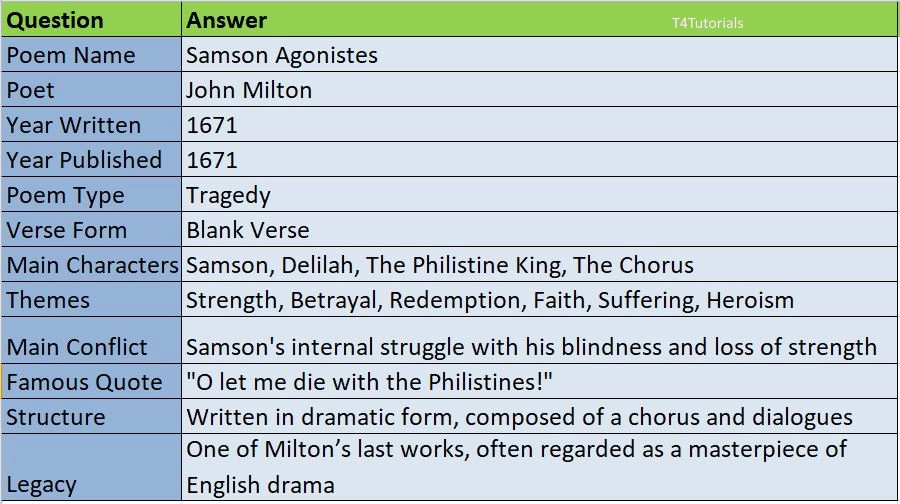Summary:
Samson Agonistes is a dramatic poem by John Milton, written in the form of a tragedy and based on the Biblical story of Samson, the hero of the Israelites who was betrayed by Delilah and lost his strength. The poem explores themes of heroism, suffering, betrayal, and redemption. The story focuses on Samson’s internal struggle as he faces the consequences of his actions, including his blindness and capture by the Philistines. The poem is centered around a dramatic dialogue between Samson and various characters, including his father, his servant, and Delilah, which ultimately leads to his final act of heroism. Despite his physical weakness, Samson finds inner strength and redeems himself by destroying the Philistine temple, killing his enemies, and sacrificing his life in the process.

Score: 0
Attempted: 0/10
Subscribe
| Question | Answer |
| Poem Name | Samson Agonistes |
| Poet | John Milton |
| Year Written | 1671 |
| Year Published | 1671 |
| Poem Type | Tragedy |
| Verse Form | Blank Verse |
| Main Characters | Samson, Delilah, The Philistine King, The Chorus |
| Themes | Strength, Betrayal, Redemption, Faith, Suffering, Heroism |
| Main Conflict | Samson’s internal struggle with his blindness and loss of strength |
| Famous Quote | “O let me die with the Philistines!” |
| Structure | Written in dramatic form, composed of a chorus and dialogues |
| Legacy | One of Milton’s last works, often regarded as a masterpiece of English drama |